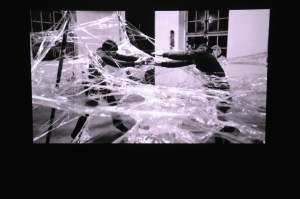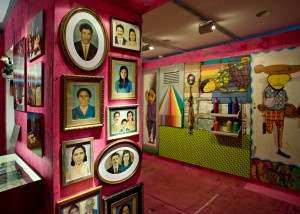
PRAGUE — “Crossing an ocean is a significant challenge for countries that are too far away from the Czech Republic,” says Sergio Villegas, curator of Mexico’s national exhibition at the Prague Quadrennial of Performance Design and Space, which took place this past June in the Czech Republic. “Western countries don’t face the same obstacles. We are fortunate that we were able to get the budget from different sources, including Mexican foundations and government bodies. Every time we prepare for the Prague Quadrennial, national curators worry about the budget and logistics. No matter how strong the curatorial idea, if you do not have the money to put up an exhibition, you are screwed.”
It probably helped that all of the costume designers represented in the 2007 Mexican national exhibit took home PQ 2007’s Gold Medal for Costume Design. That win made it easer to raise funds. As a result, this year’s Mexican contingent arrived in Prague almost a month before anyone else from any other country showed up to build their pavilions at Veletrzni Palace, Prague’s national gallery. “It was a little psychotic, but it worked, and we were happy about that,” Villegas says.
One of the fiercest discussions at PQ center on the new curatorial imperative that is inscribed in the very name of the quadrennial itself, which has re-positioned its focus from “world scenography” to “performance design and space.”

Susan Tsu, the artistic director of the USITT/USA 2011 National Exhibition, that PQ vibrates within the avant-garde of design. “The view of scenography is changing every day,” Tsu says. “Traditional boundaries and descriptors of scenography are being challenged by the intersections and blurred lines of other disciplines. All in all, curating an exhibit for the PQ is a thrilling job. One of the hardest aspects of curating design in the USA is that we are such a large country. We kept the focus clear and sharp; as a result, there is much good work that we had to pass by. Money in these hard times has been a challenge from beginning to end. We spent a lot of time raising money and borrowing equipment.”
In 2007, the countries of Italy, China, France and the Philippine were not represented with a national pavilion. This time, Italy has an exhibition (rooted in moleskin materials) — and so does China.
Even the tiny island of Cuba has one. France, however, is still not represented. Neither is Belarus.
Instead of trucking in an exhibition of objects (as Brazil does), Croatia basically brought a film documentary.
The Philippines, which presented a student exhibit in 2007, is represented with both a national pavilion and a student exhibit, courtesy of the Abatan River Theater Project or Teatro Abatan. “Our pavilion is made up of bamboo,” says national curator Rolando de Leon of the Philippine Center of the International Theater Institute (ITI), who adds that his pavilion has been conceived and designed to show off how the inland water body of the Boholano life, culture, heritage and nature in the Philippines can amaze visitors and spectators. A painter De Leon thinks the rift between visual arts and scenography is “an ego issue.”

Taiwan’s national curator Chuan-Fu Liu reports that raising the money was also a problem. But that issue was nothing compared to the real challenge, which is that designers are not so well known, compared to visual artists, in his country. The Taiwan curator invites visitors to use their mobile phones and iPads to note the black-and-white code that is attached to the bottom right hand of the computer monitors. That code allows interested visitors to later visit an online site where the designers speak at greater length (up to 15 minutes) about their aesthetics.
In Finland, the extended curatorial team consists of Reija Hirvikoski, the curator; Maiju Loukola, scenographer-researcher who coordinates the presentations and discussion series; and the lighting designer Mia Kivinen. In an email interview, Hirvikoski and Loukola states, “We are focusing on scenographic process and scenography as an eventual, living situation. This means that our ‘optics’ aims toward a certain site-specificity of the phenomena that we are exhibiting, sharing and discussing. We, too, are pointing strongly toward ‘specifities’ rather than ‘universalisms.’ ”
Given that Finland is a small Nordic country, in what ways did the Finns make its pavilion at once “specific” and “national”? “We will have a blast of a party on Midsummer’s Eve, which is big in our country. There are all kinds of eccentric traditions such as dancing naked in the middle of the night among the flowery fields in the countryside, getting lightly loaded, and singing old folk songs together, in the arms of a summer night when the sun never goes down.”





